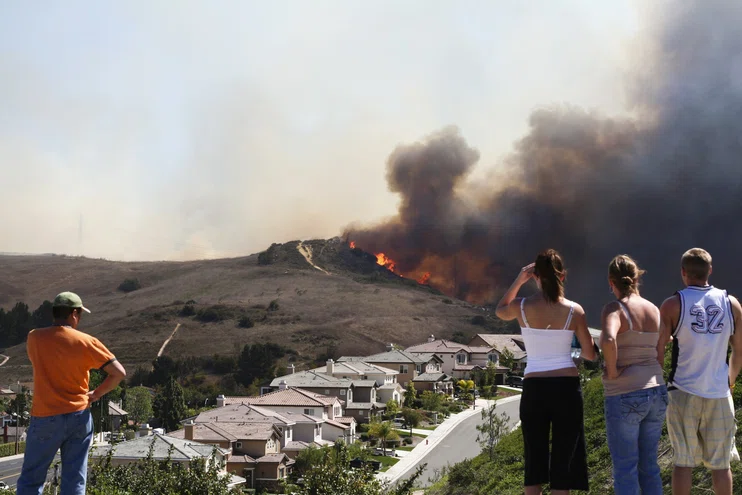


result

Feature Story
What Your Patients Need to Know About Wildfire Smoke
What Your Patients Need to Know About Wildfire Smoke
Elizabeth C. Matsui, MD, MHS, FAAAAI, explains its impacts on allergic disease and patient mitigation strategies

Elizabeth C. Matsui, MD, MHS, FAAAAI, has dedicated much of her career to environmental exposures and their effects on allergic disease. According to her, air pollution changes due to wildfires can be traced all the way back to 2016. “Prior to 2016, the USA was experiencing a decrease in air pollution. Around 2016, air pollution rates began to increase, which was also when wildfires began to grow in both duration and intensity,” she explained.
The ramifications of air pollution due to wildfires are unlikely to go away anytime soon, making it essential that education and mitigation strategies are passed on to patients right now, whether they are currently in an area impacted by wildfire smoke or not. “Clearly wildfires are increasing, which is just one part of climate change that we are observing,” Dr. Matsui continued. “Just like heat increases, wildfires are projected to continue to increase in terms of duration of season, area affected and intensity over time.”
Dr. Matsui’s research has focused extensively on housing exposures and recently, she’s expanded her focus to outdoor air pollution. “A unique factor with outdoor air pollution is that air pollution regulations are based on a regional scale,” Dr. Matsui explained. “But as we know, and as I’ve seen in my recent research, air pollution levels can vary from neighborhood to neighborhood, so it can be challenging to get a full picture of how air pollution is impacting an area.”

Elizabeth C. Matsui, MD, MHS, FAAAAI
Wildfires and the pollution they produce add an additional complicating factor when it comes to monitoring for patients. Smoke produced by wildfires isn’t only a local issue - that smoke can travel hundreds of miles. “A wildfire may be distant from where you live but can still impact your health, and patients aren’t always aware of that,” Dr. Matsui said. “Wind currents move the fine particles you find in wildfire smoke and other types of air pollution across large distances.”
Another important element when it comes to air pollution from wildfire smoke patients may not be aware of, Dr. Matsui explained, is that it may be more hazardous than other sources of air pollution. “For example, we’ve seen the same level of air pollution caused by fires lead to higher rates of asthma exacerbations. Why? Toxicity is determined by what is being burned. What burns determines the capacity for particles to trigger inflammation.”
As a healthcare professional, what can you do to help your patients? “Providing education on outdoor air pollution mitigation strategies in advance of air quality alerts, including alerts from wildfire smoke, is essential,” Dr. Matsui said. “Patients can reduce exposure by monitoring the air quality index in their area. If the air quality is poor, explain to them why they should avoid activity outdoors or in some cases, wear an N95 mask outdoors or use a portable air purifier in their home.”
The AAAAI recently published a patient resource about wildfire smoke that includes a number of steps patients can take to protect themselves that you can share. It’s available in both English and Spanish. By providing this essential education now to your patients, you’re helping them be prepared for any unexpected air quality alerts in the future.
While adaptations like this are key for patients right now, largescale mitigation is critically important to changing what the future will look like for our planet and our patients. “And just like how asthma in our society affects disadvantaged communities more than others, those are the same communities most affected by climate change exposures,” Dr. Matsui added. “They also have the least support or access to strategies to mitigate the health impacts that come from climate change. It is vital we do our part to counteract these disparities, educate our patients and do our part to mitigate climate change.”
How Can You Get Involved?
- Join an AAAAI committee that focuses on environmental issues, such as the Environmental Exposures and Respiratory Health Committee.
- Join an AAAAI committee that focuses on disparity issues, such as the Diversity, Equity, and Inclusion Committee.
- Investigate organizations outside of the AAAAI that tackle environmental issues that are seeking volunteers, including local ones.
- Reach out to advocacy@aaaai.org with any ideas or suggestions, and to ask about engagement opportunities related to climate change, diversity and environmental health issues.





